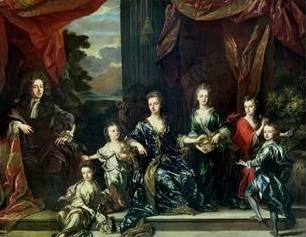Name John Closterman | Role Artist | |
 | ||
Died 1711, London, United Kingdom | ||
John Closterman (also spelled Cloosterman, Klosterman; 1660 – 24 May 1711 (buried)), was a portrait-painter. Born in Osnabruck in the Holy Roman Empire (now in Lower Saxony), he was the son of an artist who taught him the rudiments of design.
Contents
Career
In 1679 Closterman went to Paris, accompanied by his countryman Tiburen, and there worked under Francois de Troy. In 1681 he came to England and painted draperies for John Riley, at whose death, in 1691, Closterman finished several of his portraits. This recommended him to the Duke of Somerset, but he lost the Duke's favour on account of a dispute about a picture of Guercino, specially acquired for Somerset, which was afterwards purchased by Lord Halifax. In 1696 Closterman was invited to the court of Spain, where he executed the portraits of the king and queen; he also went to Italy twice, making several purchases of works of art. On returning to England he obtained much work and married an Englishwoman, Hannah, but she died and was buried on 27 January 1702. According to Arnold Houbraken, Closterman later took a mistress who ruined him by her extravagant habits and ultimately left him in a state of dejection of body and mind that led to his ultimate decline. Jacob Campo Weyerman, who took much of his biographical material from Houbraken, states "Closterman had taken a beautiful mistress who, while he was away in the country, robbed him of his valuables and disappeared, actions which drove the painter into madness".
Closterman died in 1711 and was buried in Covent Garden churchyard.
Works
Among his works should be mentioned a whole-length portrait, formerly in the Guildhall, of Queen Anne in her coronation robes, wearing a crown, and carrying the orb and sceptre; this is similar to another portrait, engraved in mezzotint by John Faber, jun., and now in the National Portrait Gallery, where there is also a portrait of John Churchill, 1st Duke of Marlborough, painted before he became a knight of the Garter, to which order he was elected in March 1702. Closterman also executed a family group of the Duke and Duchess of Marlborough, with their children, viz. John, marquis of Blandford, Lady Henrietta, Lady Ann, Lady Elizabeth, and Lady Mary Churchill. The members of the family are assembled beneath a rich hanging curtain, on a raised dais; all the figures are of life size. This picture is now at Blenheim Palace, and it is particularly mentioned by Horace Walpole in his Anecdotes of Painting. It was most probably painted about the beginning of 1698. It is related that Closterman had so many disputes with the duchess on this subject, that the duke said, "It has given me more trouble to reconcile my wife and you than to fight a battle".
Identity
For many years John Closterman and his artist brother John Baptist Closterman have been conflated in biographies, such as that in the Dictionary of National Biography. An article by J. D. Stewart in The Burlington Magazine sets the record straight, citing John Closterman's will, which left part of his estate to "my Deare and Loveing Brother John Baptist".
